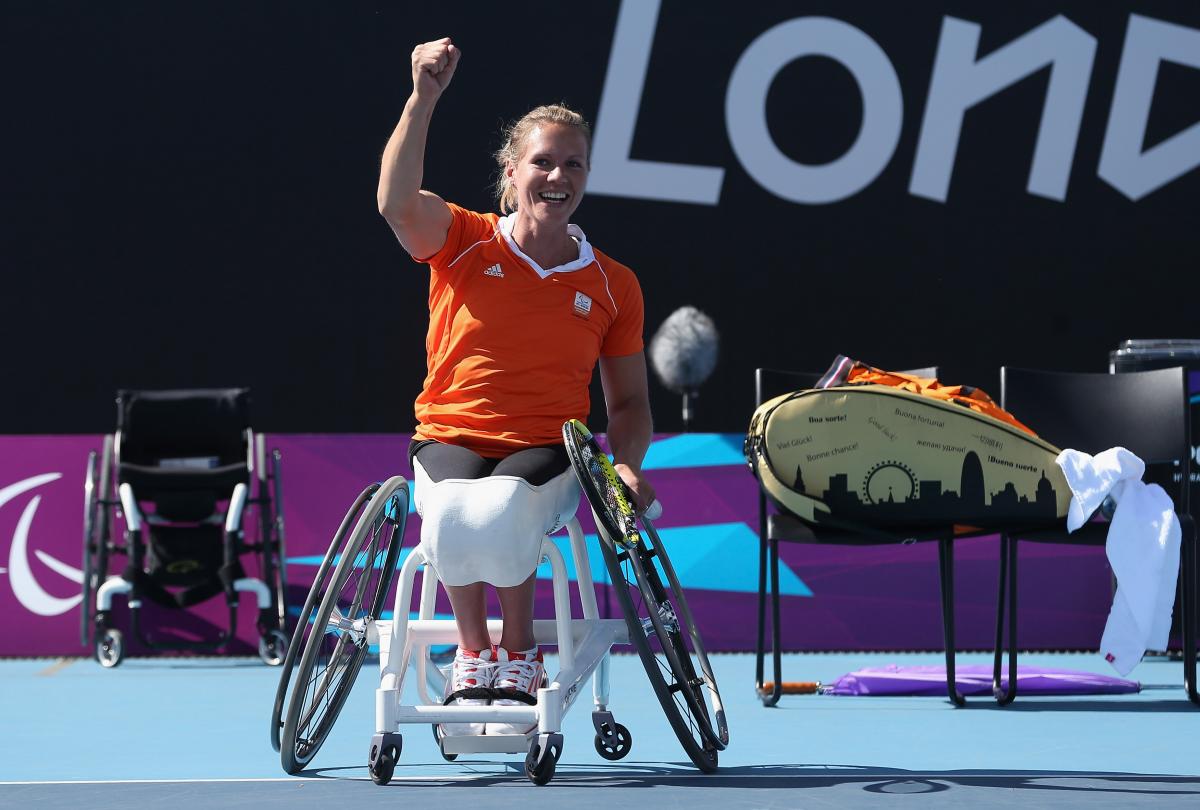Vergeer leaves historic legacy for female Paralympians
Although wheelchair tennis star Esther Vergeer has retired, she will certainly leave a mark on Paralympic sport for years to come. 08 Mar 2013
Esther Vergeer won gold in the women's wheelchair tennis singles competition on Day 8 of London 2012.
“Working on your dreams and sharing your dreams are probably the most important things in life. I hope to inspire a lot of people to follow their dreams or go for their passions or pick up a tennis racket and play tennis.”
Following the London 2012 Paralympic Games, Dutch wheelchair tennis star Esther Vergeer decided to put her game on hold for a few months.
The 31-year-old who celebrated 10 years without a defeat leaves a legacy on Paralympic sport that is arguably unparalleled.
For the last two decades, she has been the face of a very strong group of women representing the Netherlands across the Paralympic Movement, particularly in wheelchair tennis, athletics and swimming.
“We have the right athlete attitude as females and the right facilities to grow strong,” Vergeer said. “The facilities and the knowledge and the know-how in the Netherlands are quite good when it comes to disability sports for both male and female athletes.”
At the London 2012 Paralympic Games, the Dutch had some of the top performing women, and there are numbers that speak to that.
In London, 23 of the Dutch delegation’s 39 medals were won by women, and seven of their 10 golds were won by women.
Along with Vergeer, wheelchair tennis player Aniek van Koot and amputee sprinter Marlou van Rhijn made names for themselves both in Great Britain and back home.
So after so much success for Vergeer, why has she decided to retire?
“Thinking about my career, it couldn’t be better,” Vergeer said. “It was a perfect round story of beginning my tennis career 19 years ago and now having won seven gold medals a lot of Grand Slams and a lot of the tournaments I played
“Thinking about going back on court and thinking about all of the challenges I would have on the tennis court was not as big as the other side of things such as focusing on my Foundation.
“Working on your dreams and sharing your dreams are probably the most important things in life. I hope to inspire a lot of people to follow their dreams or go for their passions or pick up a tennis racket and play tennis.”
Vergeer will stay very involved in the Movement, though, trying to get more female athletes involved at the elite level and continue to integrate disability sports with the able-bodied side.
“Just because I’m no longer an active athlete it doesn’t meaning I’m going to be disappearing from sports, because sports have been my whole life,” Vergeer said.
“Of course I haven’t gotten it all straight and I don’t have the perfect plan yet, but what I do know is that in the next couple of months I want to totally focus on the Esther Vergeer Foundation, which has already been running for nine years.
“I want to give clinics here in the Netherlands for disabled kids to help them find out what sport they like and where they can go to help them get active.”
Despite Vergeer’s retirement, the Netherlands are by no means short of wheelchair tennis talent in the lead-up to the Rio 2016 Games.
In fact, three of the country’s other females players are all ranked in the top 10 in the world in singles.
“It’s hard to see in the future,” Vergeer said, “But I still know there are a lot of talented girls in the Netherlands like Jiske Griffioen, Aniek van Koot, Marjolein Buis and a Diede de Groot who is 16 years old at the moment and just became No. 1 at one point in the world junior rankings.”

 Facebook
Facebook
 Instagram
Instagram
 Twitter
Twitter
 Youtube
Youtube
 TikTok
TikTok
 Newsletter Subscribe
Newsletter Subscribe
